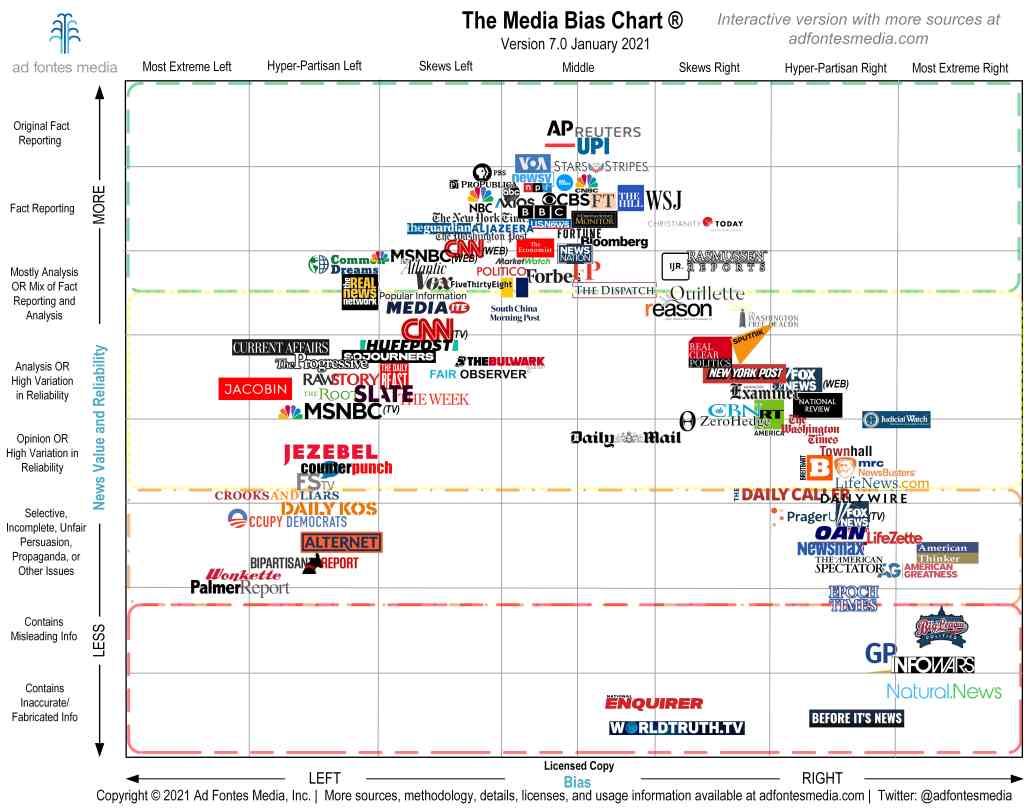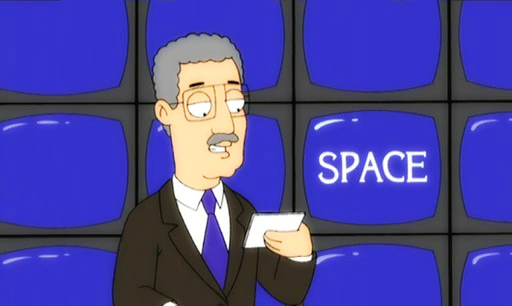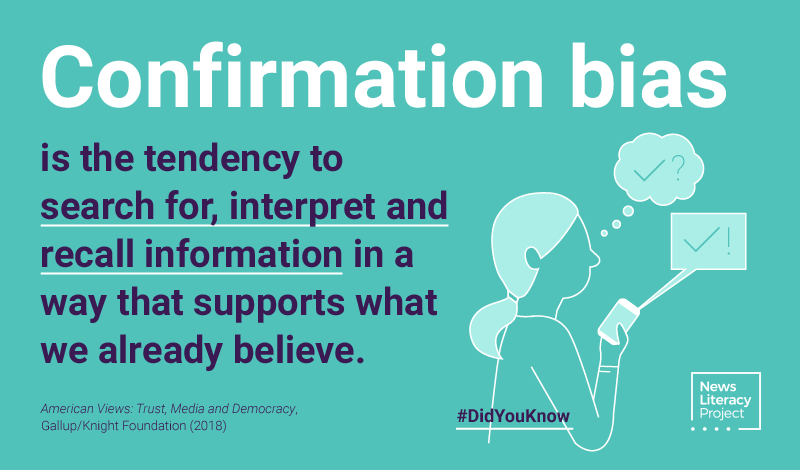Half Bakes, Double Takes and Deepfakes : 21st Century Literacies Needed
Sometimes telling the difference between truth and fiction is difficult for us. When we are looking for fiction, we pick up a novel or watch a film. When we are looking for reliable, factual and vetted information, sometimes we are unwittingly fed fiction instead. In certain circumstances, we know we are being played. The magazine cover announcing that Alex Trebek didn’t actually die but instead beamed up to his home on an alien planet? We know that one is not true. We are not so easily fooled. And yet, it is getting harder and harder to parse out what is real and what isn’t.
Media Literacy & News Literacy
Media literacy is, according to the National Association for Media Literacy Education (NAMLE), “… the ability to access, analyze, evaluate, create, and act using all forms of communication. Media literacy education refers to the practices necessary to foster these skills.” In other words, it’s the ability to filter out information that is false or misleading and to identify information that is factual when we are searching for answers to our questions and knowledge to add to our brains. NAMLE defines media as “…all electronic or digital means and print or artistic visuals used to transmit messages. Literacy is the ability to encode and decode symbols and to synthesize and analyze messages. Media literacy is the ability to encode and decode the symbols transmitted via media and synthesize, analyze and produce mediated messages” (italics added). Anyone can visit NAMLE’s resources page to access vetted resources for pointing out COVID-19 misinformation, trustworthy sites for race, equity and social justice information and more. It is an excellent place to start for media literacy information.
Media literacy is … the ability to access, analyze, evaluate, create, and act using all forms of communication. Media literacy education refers to the practices necessary to foster these skills.
National Association for Media Literacy Education
Under the umbrella of media literacy falls news literacy. The News Literacy Project (NLP) defines news literacy as “The ability to determine the credibility of news and other content, to identify different types of information, and to use the standards of authoritative, fact-based journalism to determine what to trust, share and act on.” With NLP’s informative podcasts, tips and tools, and a free app for practicing our skills in a game-like format, we can educate ourselves to avoid taking in bad information and, potentially, spreading that bad information to our friends. As a nonpartisan, non-profit educational organization, the News Literacy Project is taking on the challenge to help our fellow Americans better identify the difference between journalistic facts and journalistic opinions. Their informational brochure presents troubling numbers from various studies including a 2015-2016 Stanford study that showed that “96% of high school students failed to challenge the credibility of an unreliable source.” Additionally, a Pew study showed that “Only 35% of adults correctly classified all five opinion statements presented to them.” Nationally–collectively–we have a lot to learn.
News literacy: “The ability to determine the credibility of news and other content, to identify different types of information, and to use the standards of authoritative, fact-based journalism to determine what to trust, share and act on.”
News Literacy Project
Confirmation Bias
Here’s the thing, or at least a thing: Presenting someone else’s opinion as a fact is, in fact, not a fact. It is simply their opinion or belief. That doesn’t make it true. If we agree with them, even if they are factually incorrect, it is probably because we want to believe it too. This is called confirmation bias. According to Iqra Noor writing for simplypsychology.org, confirmation bias “.. is the tendency of people to favor information that confirms their existing beliefs or hypotheses…and happens when a person gives more weight to evidence that confirms their beliefs and undervalues evidence that could disprove it…” We sometimes believe what we want to believe is true, even if it is not. Because we want to believe something’s true, we may search for information and the opinions of others who can validate that belief.
Today’s technology makes it easier and easier to prop up one’s beliefs, no matter how unfounded, and spawn conspiracy theories that ripple out into the world. When enough people latch on to these theories, facts become unimportant if they do not support that theory. It doesn’t help that when we use a search engine to find information, we may be directed towards biased information that an algorithm has determined for us. Noor uses Google as an example. “If you were to search ‘Are cats better than dogs?’ in Google, all you will get are sites listing the reasons why cats are better. However, if you were to search ‘Are dogs better than cats?’ Google will only provide you with sites that believe dogs are better than cats. This shows that phrasing questions in a one-sided way (i.e. affirmative manner) will assist you in obtaining evidence consistent with your hypothesis.” The takeaway: when we search for information we should be looking at opposing viewpoints and all sides of an issue. For more information on confirmation bias and how to avoid it, there are several short, informative videos you can watch here:
News Bias Awareness

There’s a growing list of resources to help one who is looking for a) greater understanding about bias in their newsfeed or b) a news source that is more balanced. AdFontesMedia.com has produced a popular interactive chart showing their reliability and bias ratings for more than 100 major news sources. Knowhere News attempts to provide unbiased local and national news in a daily email news briefing with explicit analyses from the various sides of the issues being reported. The website AllSides.com is also a great place to start in exercising news literacy with current event issues. A visit to their site starts with the day’s headlines and news stories being presented from the left, the right and the center, politically speaking. They pull their articles from major journalistic news sources that lean one way or the other. It would be as if you had the Fox News, CNN, and NPR pages open at the same time with the same news. But AllSides has it all in one place. If we only look at the news we like, we won’t have another point of view to consider, and if we don’t have another point of view, it is hard to make an educated decision about what we believe. And if we don’t make educated decisions we may fall down a rabbit hole and start believing that Alex Trebek was an alien. But he wasn’t. So don’t do that. But…
Deepfakes
What if we saw a photo of Alex Trebek on Mars that appeared to be taken from the Perseverance Rover? Could we believe it then? Hmmm, sounds fake, and not even a convincing fake. We are still not falling down that rabbit hole. But the deepfake, well, that is something to be wary of. The Watch Blog of the U.S. Government Accountability Office (GAO) tells us that a deepfake is “a video, photo, or audio recording that seems real but has been manipulated using artificial intelligence (AI). The underlying technology can replace faces, manipulate facial expressions, synthesize faces, and synthesize speech. These tools are used most often to depict people saying or doing something they never said or did.” This is a problem because the average person will have a great deal of trouble determining if any of these depictions of a person is real.

Recently, actor Tom Cruise was the victim of a deepfake video. In it Cruise appears to perform a simple magic act. The video is so flawless in its realistic depiction of the actor that it is nearly impossible to tell that it is fake. A fake video of him performing a magic trick may seem harmless enough, but what if a video had been made of him doing something illegal or saying something offensive? His life could be irreparably harmed by that. Now imagine it happened to us. It is an alarming thought. So how can we, as media-literate and news-literate informational consumers, spot deepfakes? The GAO blog shows us some ways to identify them and gives us more detailed information about how they are made. Additionally, visit whichfaceisreal.com to practice spotting the fakes beside the real. All of these advances in technology make it harder and harder to determine what is real and what is not, so be smart. Be a savvy consumer of balanced news and information. Develop media and news literacy skills that will help you from being duped out of your own time, money and reasonable, well-informed opinions. And don’t believe everything you see because most things, these days, need a closer look.




Recent Comments